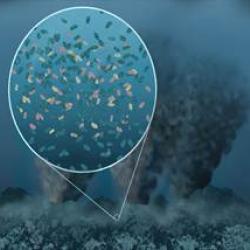Source Institutions
Source Institutions
Add to list Go to activity
Activity link broken? See if it's at the internet archive

In this activity, learners discuss how life is defined and conduct a simple experiment, looking for signs of life in three different “soil” samples. The experiment introduces learners to the difficulty that scientists face in defining life. By observing the soil samples, learners try to determine if any contain signs of life and work to identify, refine, and create a set of characteristics that may be used to identify living versus nonliving things. The activity concludes with the development of a group definition of life.
- 10 to 30 minutes
- 45 to 60 minutes
- $5 - $10 per group of students
- Ages 8 - 14
- Activity, Experiment/Lab Activity, Lesson/Lesson Plan
- English
Quick Guide
Materials List (per group of students)
- 3 (clean) plastic cups (5–8 oz.), clear if available
- ¾ to 1 cup of sand, enough to fill each cup ¼ full
- 3 teaspoons (tsp.) sugar
- 1 teaspoon (tsp.) instant active dry yeast
- 1 tablet of crushed (as finely as possible) Alka-Seltzer® or comparable fizzing tablets
- hot water, enough to cover the sand in each cup (not hot enough to kill the yeast)
- 1 pitcher, carafe, or other appropriate container for the hot water
- library books related to the topic (optional)
- a variety of colorful Post-It® notes (optional)
- Pens or pencils
- Extreme-O-File: Searching for Life activity pages
Subjects
-
Earth and Space Science
- Astronomy
-
Solar System
- The Planets
-
Life Sciences
-
Cells
- Cell Metabolism
- Diversity of Life
-
Cells
-
Physical Sciences
-
Chemistry
- Chemical Reactions
-
States of Matter
- Gases
-
Chemistry
-
The Nature of Science
-
The Scientific Process
- The Scientific Worldview
- About Inquiry
- Asking Questions
- Conducting Investigations
- Gathering Data
- Formulating Explanations
- Communicating Results
- Science as a Career
-
The Scientific Process
Audience
To use this activity, learners need to:
- see
- read
- touch
Learning styles supported:
- Involves teamwork and communication skills
- Involves hands-on or lab activities
Culture, ethnicity, and gender
-
Girls
- Explicity developed for this group
- Acknowledges this group's contributions to STEM
- Highlights STEM opportunities for this group
- Identifies role models or mentors in STEM fields from this group
- Uses inclusive images of people from this group
Other
Components that are part of this resource:
Includes alignment to state and/or national standards:
This resource is part of:
Access Rights:
- Free access
By:
Rights:
Funding Source:
- NASA, NNH09ZDA001N–EDUC
